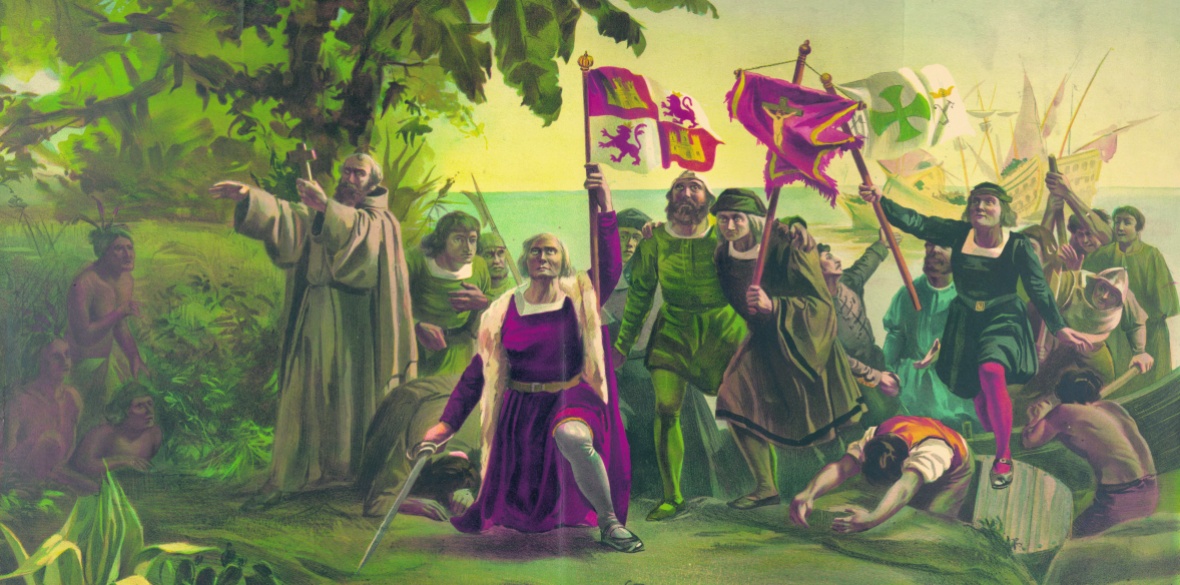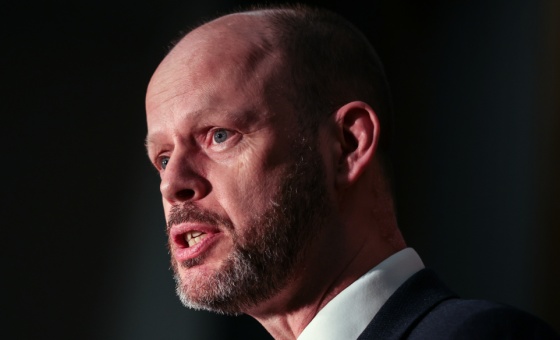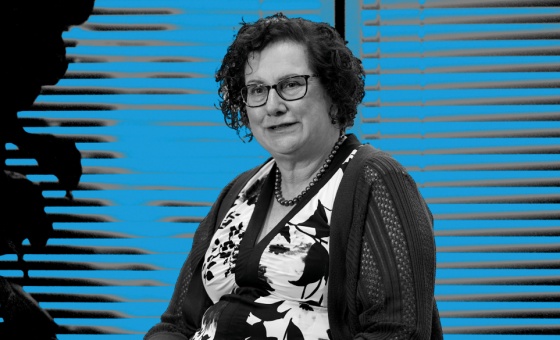This is the last article you can read this month
You can read more article this month
You can read more articles this month
Sorry your limit is up for this month
Reset on:
Please help support the Morning Star by subscribing here
Today marks the 80th official federal observance of Columbus Day in the United States.
For decades, young children have been taught about Christopher Columbus and his “heroic” adventures in school, often reciting the old poem: “In 1492, Columbus sailed the ocean blue.”
However, the reality is that Columbus’s legacy was far from heroic, as the “explorer” was not only a coloniser, but a murderous slave master who was sent on a suicide mission by Spain’s king and queen.
Columbus was not, contrary to popular belief, attempting to prove the world was round. This claim was already hypothesised by mathematician Pythagoras at the start of the sixth century BC and was backed by Aristotle two centuries later.
Columbus was, however, interested in spices, a product central to the European economy at the time.
After years of attempting to convince the royals of Europe to fund his journey, with Portugal, England, and France all refusing, Columbus finally won over King Ferdinand II and Queen Isabella I of Spain.
Though royal advisers warned against it, the couple believed that, were Columbus to succeed, they might gain access to rich minerals and resources. The royal couple gave Columbus a bare minimum of materials and a crew to plot his westward route to Asia.
The explorer hoped his efforts would bring glory, fame and gold. However, he highly miscalculated the distance of his route — by almost 10,000 miles.
After months of travelling, Columbus and his crew landed in the Bahamian Island of Guanahani (which he named San Salvador), where they encountered the indigenous Taino people.
Columbus and his men mistakenly assumed they had landed in an area of the East Indies and dubbed the indigenous inhabitants “Indians.”
This landing was the kick-off to what would be a horrific massacre across the Caribbean, although the native Tainos did not know this yet.
In diary entries detailed by Columbus himself, the conqueror described the natives as welcoming and hospitable. He noted that they never hesitated to share their resources and that they had skilled farmers and navigators.
The explorer was eager to claim his newfound discovery and quickly “established” the Town of Isabella on Hispaniola, which was created on existing Taino territory.
In the years following his initial journey, Columbus hit a number of nearby Caribbean islands, including the places that eventually became Cuba, the Dominican Republic, Haiti, and even parts of South America.
As a consequence, many of the existing indigenous tribes suffered great loss and bloodshed. The Taino people, whom scholars estimate may have numbered more than three million on Hispaniola alone, were nearly extinct by the end of Columbus’s reign.
Once thriving and complex economies and social and political systems were no match for the incoming flux of Spanish conquerors.
Thousands of women and young girls were sold into sexual slavery, some as young as nine years of age. As recounted in Columbus’s own writings, “a hundred castellanoes are as easily obtained for a woman as for a farm, and it is very general and there are plenty of dealers who go about looking for girls; those from nine to 10 are now in demand.”
Those who didn’t die from the diseases that the Spaniards brought over were put to work in gold mines.
As for Columbus himself, his name wasn’t found in too many history books until 1828, when author Washington Irving wrote The Life and Voyages of Christopher Columbus, which was a mostly fictional book that many misinterpreted as an autobiography.
Then, between 1880 and 1924, more than four million Italians immigrated to the United States, fleeing the rural poverty in southern Italy and Sicily.
Many of the incoming immigrants clung to the distorted tale of the “Italian-American hero,” as a reflection of their own immigrant stories, and by 1937, “Columbus Day” had become a national holiday.
In reality, Columbus didn’t return to Spain as a hero. In fact, he was widely considered a disgrace.
He was arrested in 1500 — brought back to Spain in chains due to his mismanagement of the island of Hispaniola — and was stripped of his governorship. Eventually, he managed to get a pardon from King Ferdinand II.
As more people across the United States begin to acknowledge these atrocities and efforts to replace the outdated celebration with “Indigenous People’s Day” expand, we can reflect on all that was lost: the native stories that will never be told, the women and girls who were victims of horrific acts of sexual violence, and the ongoing erasure of violence against indigenous communities.
Let us forget the monster who started it all, and throw Columbus on the dust heap of history where he belongs.
This article appeared first on peoplesworld.org.










